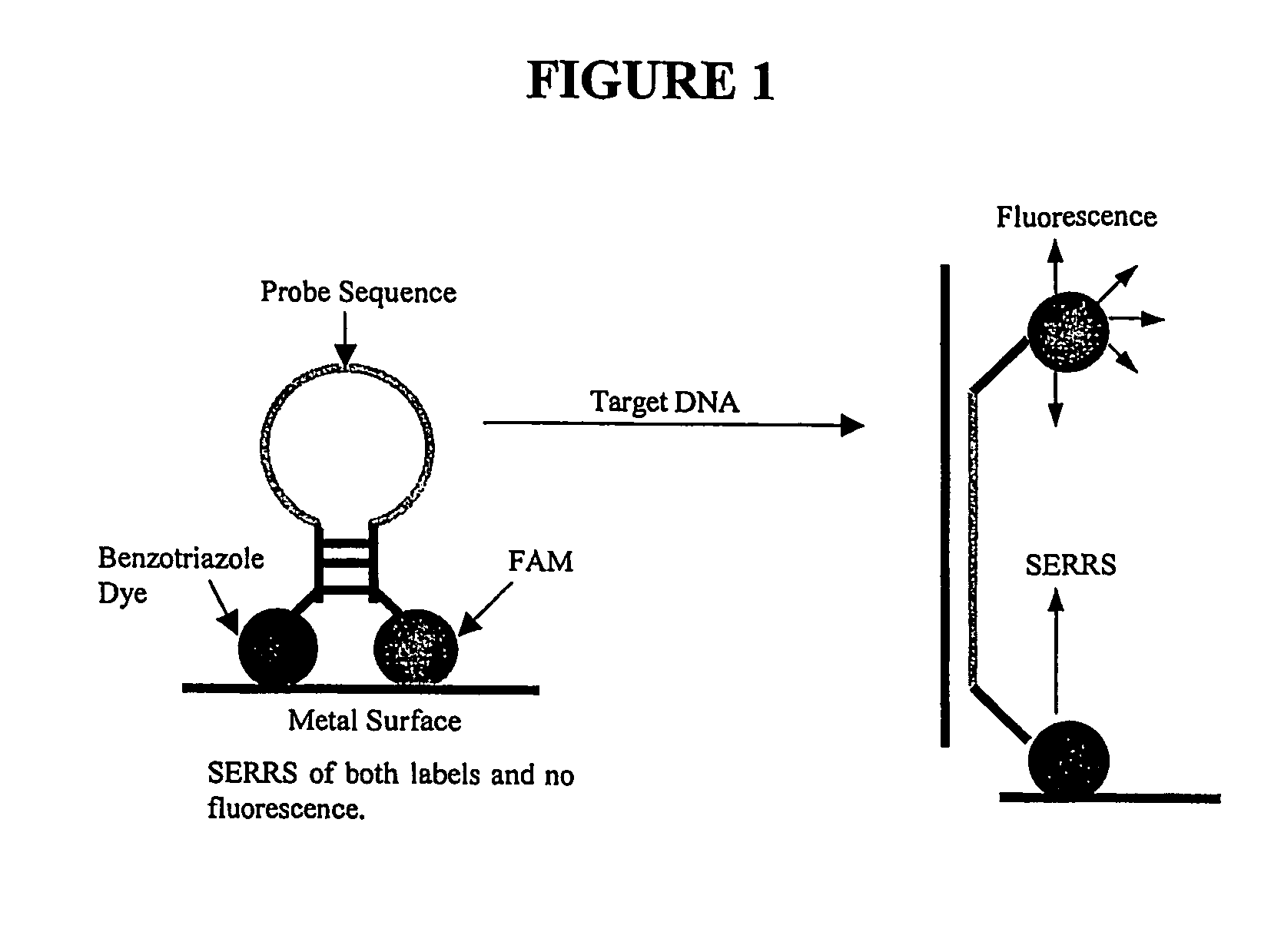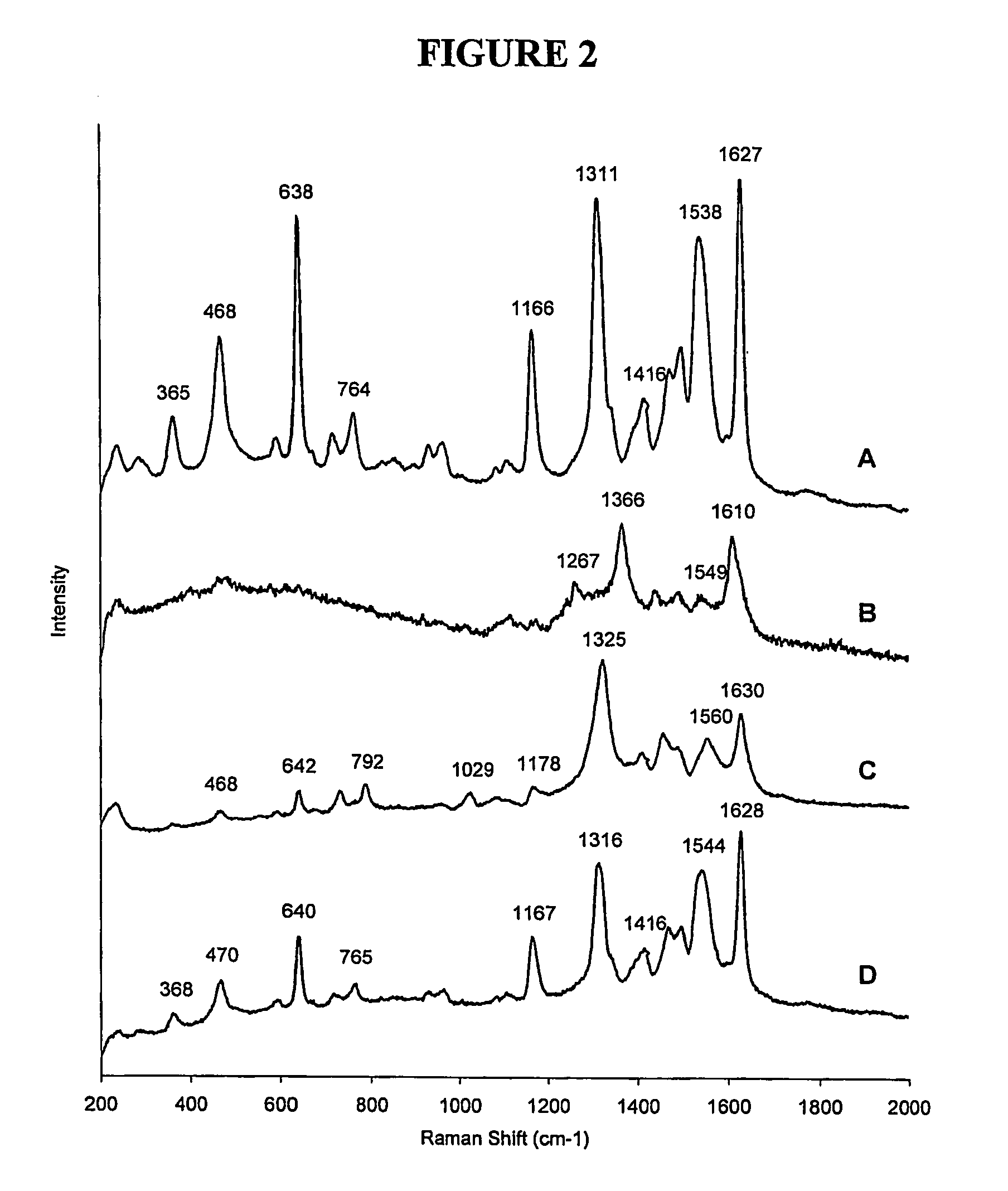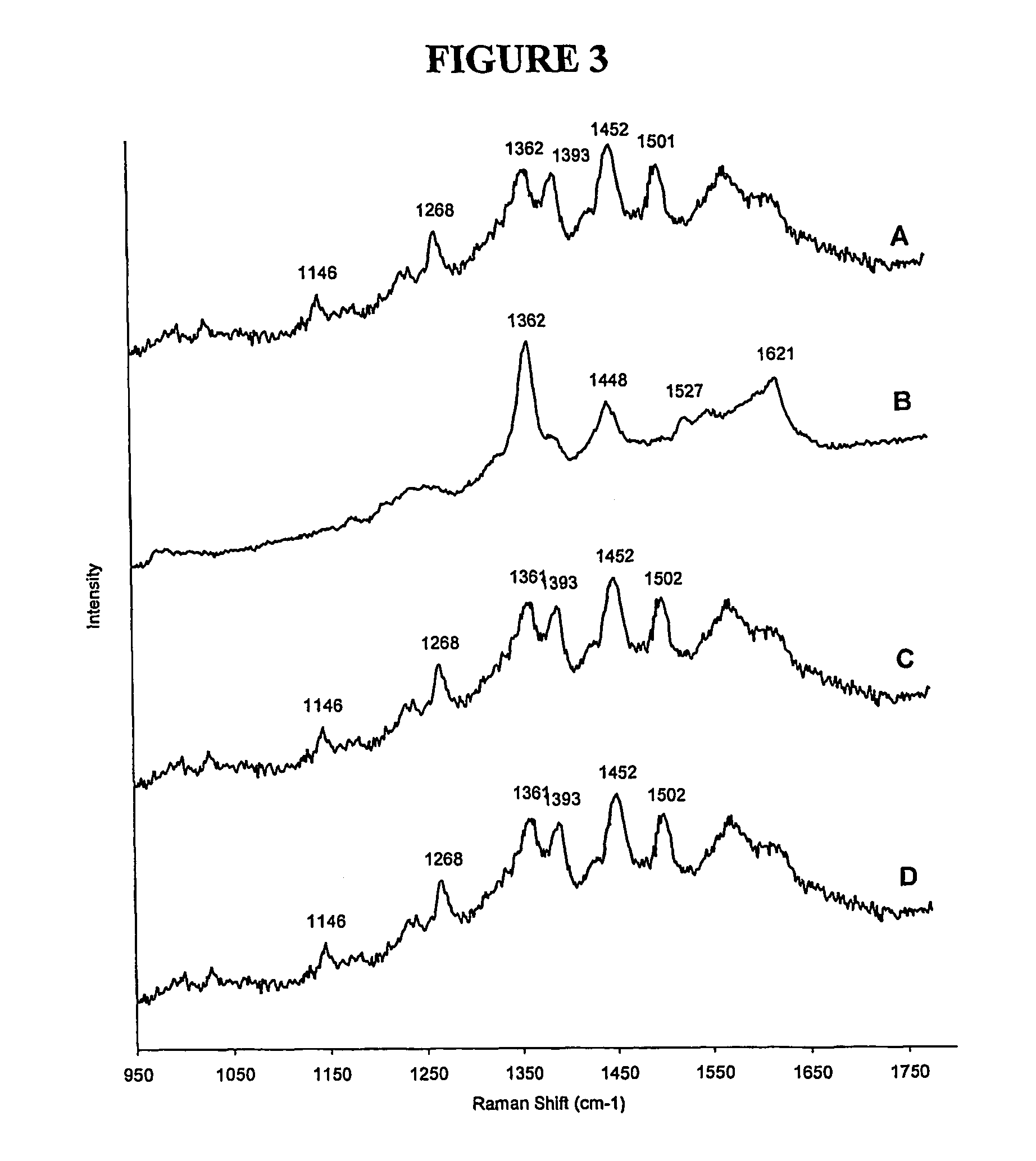Nucleic acid sequence identification
a technology of nucleic acid and sequence identification, applied in the field of nucleic acid sequence identification, can solve problems such as background fluorescen
- Summary
- Abstract
- Description
- Claims
- Application Information
AI Technical Summary
Benefits of technology
Problems solved by technology
Method used
Image
Examples
example 2
Analysis of the SERRS Beacon on Silver Nanoparticles
[0195] As discussed above, in the SERRS Beacon a strong SERRS signal is generated when the beacon is closed that shows the presence of both the FAM and the pABT dye. This occurs as the pABT dye immobilises the SERRS Beacon on the nanoparticle and forces the FAM to be close to the surface and produce SERRS. In the absence of the surface seeking dye, a FAM labelled oligonucleotide would give poor SERRS as the FAM would not adsorb well onto the silver. In the SERRS Beacon the FAM signals actually dominate as FAM gives stronger signals than the pABT dye by approximately two orders of magnitude.
[0196] Under these conditions (2×10−7 M) we could not detect any fluorescence using a Cary Ecllipse fluorimeter, a Stratagene MX4000 fluorescence plate reader and a Renishaw Raman spectrometer.
[0197] A complementary sequence with overhanging bases was added to the SERRS Beacon and the SERRS recorded. The spectra clearly show a considerable cha...
example 3
Analysis of the SERRS Beacon on Silver PVA Film
[0200] To investigate different formats that could be used with the SERRS Beacon a silver / PVA surface was used as the substrate to give the additional quenching and generate the SERRS. The surface used was one that has been used in several SERRS experiments. For example use by Vo-Dinh et al.10 was as a surface for a SERRS Biochip and we have subsequently showed its use for the obtaining SERRS from benzotriazole dye labelled oligonucleotides.19 The silver / PVA film is robust, easily handled and allows accurate spotting of the SERRS Beacon due to the hydrophilic nature of the PVA surface preventing uncontrollable spreading of the spot. In this application, the surface was modified to contain the SERRS Beacon, which was added to the surface in a buffered solution and left for 20 minutes prior to washing with water several times. The same experiments as used with the nanoparticles were repeated on the silver film and the spectra acquired (s...
example 4
Analysis of Different Dyes as Fluorescence Quenchers
[0201] In SERRS beacons incorporating fluorophores, the surface seeking SERRS label preferably has the effect of quenching the fluorescence from the fluorophore when both are present on the enhancing surface. In order to investigate and optimise SERRS labels, a range were prepared, and their quenching properties were compared with TAMRA and DABSYL against two fluorophores —FAM and Cy5.
[0202] Two different concentrations of fluorophore dye solution (1×10−7M and 5×10−8M) and six solutions of differing quencher dye concentration (1×10−7M to 1×10−8M) were prepared in 15% DMF, 15% acetonitrile, 70% water. Fluorophore-quencher mixtures were prepared using 1.5 ml of 1×10−7M fluorophore so as to give a final fluorophore concentration equal to 5×10−8M and desired quencher concentration. The fluorescence emission spectra of the low concentration fluorophore solution and that of the fluorophore-quencher mixtures were measured three times. A...
PUM
| Property | Measurement | Unit |
|---|---|---|
| melting temperature | aaaaa | aaaaa |
| angle | aaaaa | aaaaa |
| angle | aaaaa | aaaaa |
Abstract
Description
Claims
Application Information
 Login to View More
Login to View More - R&D
- Intellectual Property
- Life Sciences
- Materials
- Tech Scout
- Unparalleled Data Quality
- Higher Quality Content
- 60% Fewer Hallucinations
Browse by: Latest US Patents, China's latest patents, Technical Efficacy Thesaurus, Application Domain, Technology Topic, Popular Technical Reports.
© 2025 PatSnap. All rights reserved.Legal|Privacy policy|Modern Slavery Act Transparency Statement|Sitemap|About US| Contact US: help@patsnap.com



